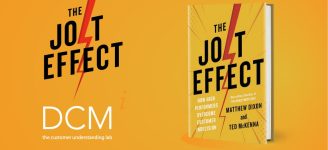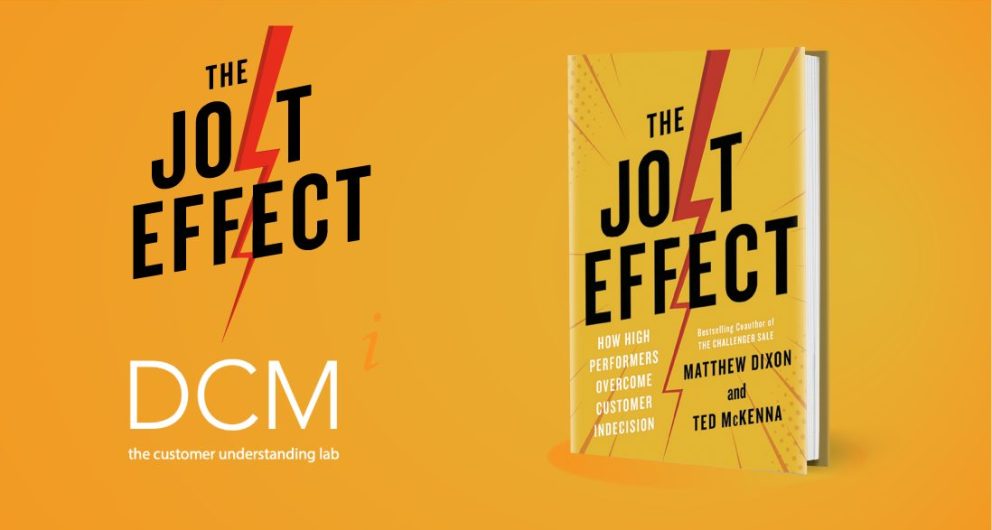- Coaches (3)
- Courses (25)
- Customer Success (10)
- Investment & Fundraising (6)
- Management & Leadership (34)
- Marketing (6)
- Prospecting (19)
- Sales (34)
- Sales Impact Academy News (23)
- Wellbeing (9)
Cold Calling and Beyond: Level Up Your Prospecting

- Courses, Prospecting
- Alexandria Snow
- Estimated Reading Time: 14 minutes
Cold calling is one of the most effective, and contested, strategies in sales.
-
-
42.1% of respondents agree that the dialing is the most effective sales tool at their disposal. (Sales Insights Lab)
-
57% of C-level buyers prefer to be contacted by phone. (Crunchbase)
-
Companies that don’t believe in the effectiveness of cold calling experience 42% less growth than companies who do believe in cold calling. (Zippia)
-
In this blog we will take a step back and discuss what the seller and sales leader can do to ease the anxiety of cold-calling, increase conversions, embrace the ever-changing market and help you level up cold calling strategy.
For the uninitiated, cold calling is a component of outbound selling, a type of sales solicitation towards prospects who have not previously interacted with the salesperson making the call.
As buyers, and private citizens, we all have our personal horror stories of robo-dialers and bad cold calls. In fact, according to Hiya’s 2022 State of the Call Report, 92% of consumers believe unidentified calls are fraudulent and 79% of unidentified calls go unanswered.
What can a seller do to avoid the pitfalls associated with cold calling? There are a number of theories but the one that we see having the biggest impact, sees the actual act of dialing as just one touch out of many.
Your prospecting strategy must be multi-channel and multi-threaded.
The best prospecting is done across multiple channels, transforming your ‘cold’ call into a ‘warm’ call as it is generally best to avoid calling as a first touch.

Warm Calling and Prospect Nurture
Warm calling is when you, or your company, has had some sort of prior contact with the prospect.You can look for shared contacts for an introduction or a referral, leverage multi-channel prospecting journeys, or warm contacts with account-based marketing campaigns.
82% of prospects book meetings with sellers who proactively reach out. (RAIN Group)
Here’s an example of how you can leverage social to warm a contact:
An AE likes to start with a personalized LinkedIn connection request in the morning.
They follow up that afternoon with an email containing a video message.
Then they call the following day.
The prospect will feel more comfortable interacting with the email since they already have some name recognition with the rep, then when the rep calls there is already a sense of connection.
A key element in the scenario above is that the seller is leveraging LinkedIn. In today’s work social networks, and LinkedIn in particular, have become increasingly important to sales strategies across industries.
78% of salespeople engaged in social selling are outselling their peers who aren’t. (OptInMonster,Salesforce)
Connection requests, in-mail, and engaging in conversations on LinkedIn are all great ways to build name recognition with your buyers and the market at large. Your sellers, their leaders, and your organization should be actively engaging in social channels.
But before a seller engages in any channel they should already be thinking about how they can personalize their outreach to their prospect. This is where research comes in.
Get to Know Your Prospects
Tools like LinkedIn Sales Navigator, Zoominfo, Crunchbase, etc are available to help you get to know your prospects at scale. It’s important to understand why you are researching, and for what purpose.
You are looking to understand your buyer’s business and their perspective in the context of your solution. You should also look for ways to connect, figuratively speaking, with your buyer. Do you share a hobby? What do you have in common? Do you have shared connections?
One LinkedIn article found that a seller mentioning a common connection during a cold call can increase the likelihood of booking a meeting by 70%!
There are many competing viewpoints on how much time you should spend researching prior to contacting your prospects.
Research from DemandScience.com states, “No matter how highly qualified your lead is, you should never fail to do your research and prepare for your sales call. The extra 10 or 15 minutes you take for this may make all the difference in converting them into a happy customer.”
If you are leveraging sales engagement tech like Outreach, Salesloft, and the like, you can go a step further and see the engagement with your initial ‘warming’ touches which can give you a better idea of the prospect’s interest.
While research is important, it shouldn’t be an excuse to push off a dial. Set yourself a limit to the amount of prep you will do and then prepare yourself for the Dial.
Best Time to Dial
Our research shows that it is best to batch your calls, meaning have your list of calls to dial grouped together inside power-hours. Lists can be further categorized by company type, lead-warming status, etc.
CallHippo conducted research from over nearly 14,000 cold calls to identify the best time to dial. They found this time to be just before the end of the workday, typically 4 p.m. – 5 p.m.
Why? The theory is that most professionals will have completed the majority of their daily work by this time and are unlikely to begin a new work task.
The second-best time to call is reportedly between 11 a.m. and 12 p.m., just before lunch.
Again, the reasoning is that professionals are focused on finishing up tasks at this time, not starting new ones so your call is less likely to be viewed as an interruption.
Try not to call during lunch, though, for obvious reasons.
On the flipside, before 10 a.m. is viewed as the worst time to cold call. Most buyers spend their mornings on administrative tasks, dealing with priority requests, attending internal meetings, or completing unfinished work from the day before.
When it comes to what days see the best conversions for cold-calling, Wednesday is the clear winner followed closely by Thursday. According to Hubspot this is because by mid-week, prospects have settled into their work and are generally more receptive to a call.
Mondays and Fridays are no goes. Notoriously busy days, professionals are either gearing up for the week or weekend. Mondays takes the top spot for worst dialing day as they are also popular for team meetings.
Level up. . . Get Ready To Dial!
OK, now you are ready to start dialing – or at least you would be if it wasn’t for…
You’re in the office and it’s too quiet, everyone can hear you!
You’re in the office and it’s too loud, you can’t hear yourself!
You aren’t ready and you’re scared of messing up
What do you do if the prospect doesn’t pick up?
What if they do pick up… What if they are mad!?
Sales, and especially cold calling can be daunting.
63% of sellers say cold calling is the worst part of their job. (LinkedIn)
As a seller you will hear ‘no’ more than any other job and many prospects are not shy when it comes to saying no, often, and loudly. As a seller you have to find ways to get comfortable with the uncomfortable and overcome your anxieties.
Every seller is different so every seller will need to consider what best works for them. Some sellers establish rituals, have a favorite headset, or modify their environment to their standards.
This comes in all shapes and sizes but leaders can help too.
Team power hours are a popular tool that can build camaraderie within the team. With everyone on the phone at the same time team members offer each other support, share stories, and hype each other up. It can make bad calls into teaching moments, reframing failure.
The best sellers reframe failure as a win, every ‘no’ is an opportunity to learn why and get better.
Once a seller has what works for them it’s time to dial, and dial often, by making just a few more call attempts, sales reps can increase the conversion rate by 70% (CallHippo). But what do you do once you get a buyer on the phone?
To Monologue, or Not to Monologue
Did you know that Sales reps with longer monologue times during cold calls have more success. (Crunchbase, Gong.io)
Many sales leaders will remind you that good sellers ask good questions and that it is important that your buyer be doing a significant amount, if not the majority, of the talking. A monologue does not mean the seller should do all the talking, rather it re-emphasises the importance of another sales tool – the pitch.
According to Crunchbase the sweet spot for a pitch monologue is 37 seconds, in addition the pitch must succinctly answer 3 questions: What do you sell, why you are different, and why the buyer should care.
But how does one craft the perfect pitch? Many a well-meaning enablement pro has agonized over this question, often resulting in structured pitch decks and scripts that are memorized and practiced at Sales Kick-offs across the globe only to be quickly forgotten in a month.
The reality is you can NOT be prescriptive when it comes to pitching.
Every buyer is different and if you approach pitching as a memorization exercise your sellers are likely going to see poor conversion rates. No one wants to book a meeting with someone reading from a script unless you are in Hollywood!
Rather than providing a script it is better to provide the key elements the seller should hit with examples on how to personalize their pitch based on what they know about the prospect.
Enablement and managers can help sellers by providing cheat sheets of key points and examples of how to personalize pitches. Role playing is a great tool and this is a great way to use it!
Every seller should have a variety of different pitch options in their back pocket that they can pull from at any moment.
Here are some additional tricks we found in our research:
Asking “Is now a bad time?” on a cold call makes you 40% less likely to book a meeting. (Gong.io, 2021)
Don’t Forget About the Power of A Voicemail
97% of calls go to voicemail. That is staggering! It is critical that sellers master the art of voicemail. Your message needs to invoke curiosity, ensure the recipient knows who you are, and how to get back in touch.
Hello [name]. I’ve talked to a lot of [job title] regarding [your company’s [value prop]. If this resonates with you in any way please reply to the email I [just sent or will send after this call]. My name is [name] from [company]. Again my name is [name] from [company]. Thanks!
Did you catch the easter egg in the script above? You aren’t just leaving a voicemail, you are also sending an email. This makes it just that much easier for your buyer to get in touch with you while also giving you another opportunity to share information that might pique their interest.
One other tip when it comes to voicemails, pitches, really any prospecting communication – cut the fluff. You aren’t checking in, circling around, or touching base, you are presenting a solution to a problem they have – lean in, you got this.
In Conclusion
While cold-calling may have a somewhat negative reputation it is still a critical part of your prospecting strategy. Close rates are built on the back of your pipeline and every seller must have the skills to contribute to the top of the funnel.
How sellers build up to the call, warm contacts, prep their spaces, etc are important to their process and should not be overlooked. As leaders it is critical we give our team the tools they need to be successful.
Training and skill development is also key to arming your sellers with the skills they need to be successful prospectors.
One-off training won’t cut it, cold-calling is something that requires constant practice and innovation. The best approach is to leverage ongoing enablement with milestone training sessions/courses, reinforcement exercises and role-play, and conversation intelligence.
Not sure where to start? Our Cold Calling Crash Course is here to get you going. Not an SIA customer? We can help you with that too!





